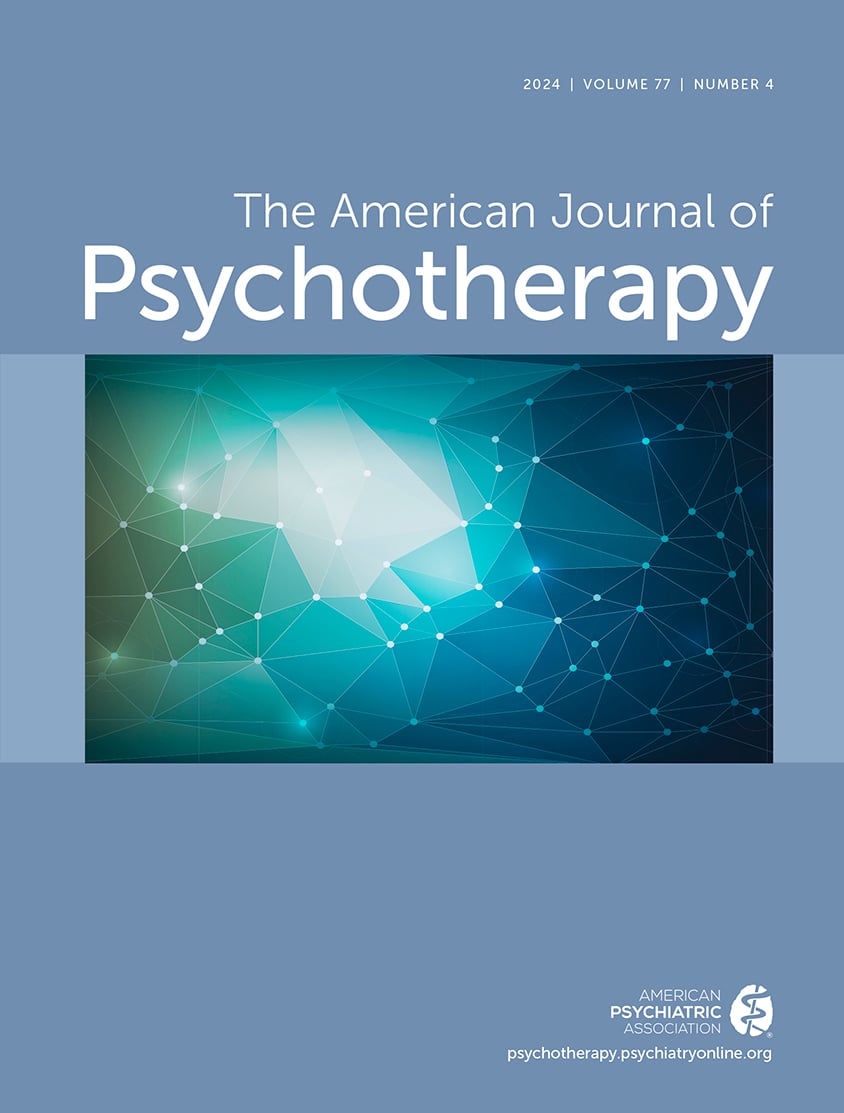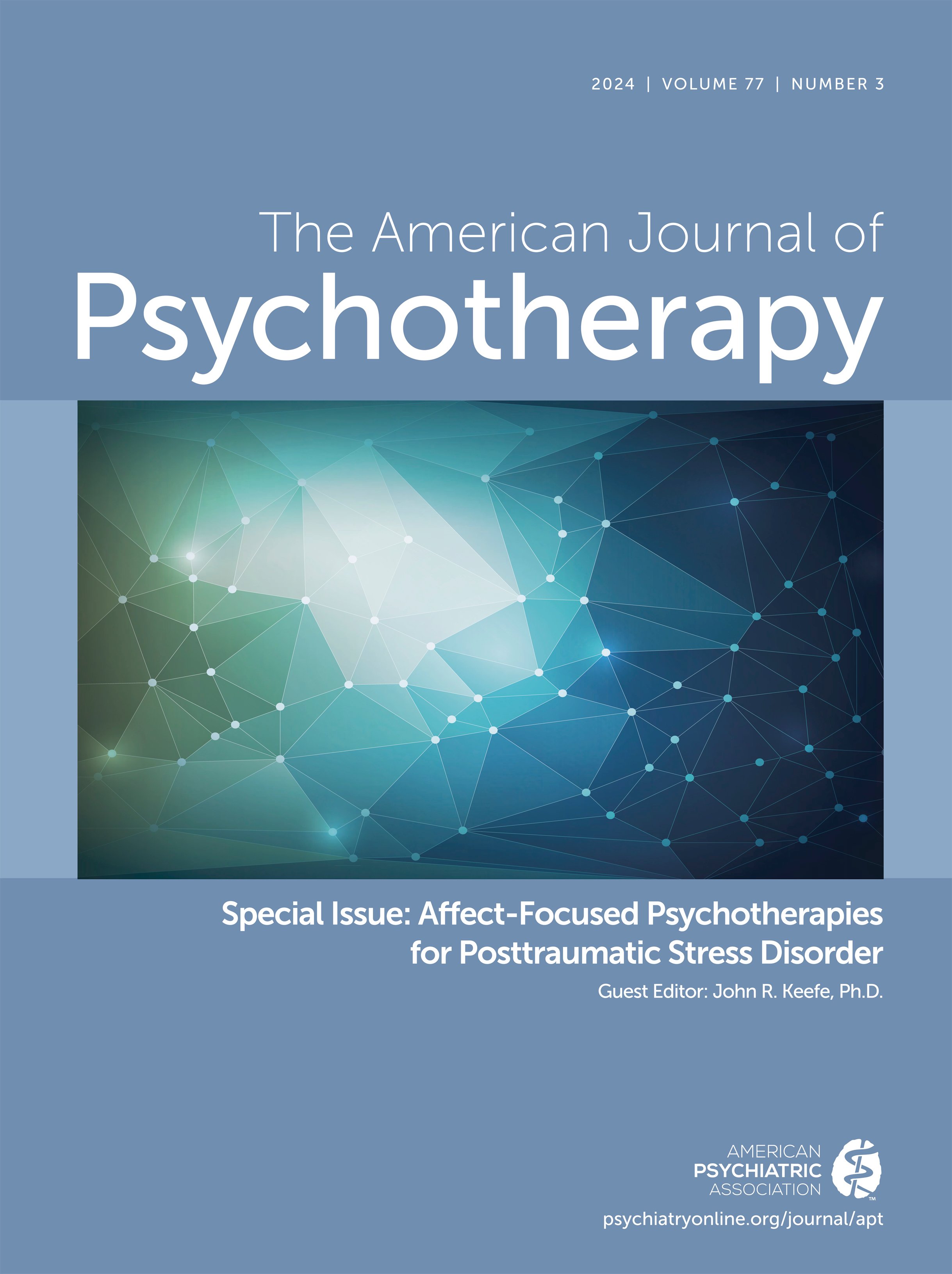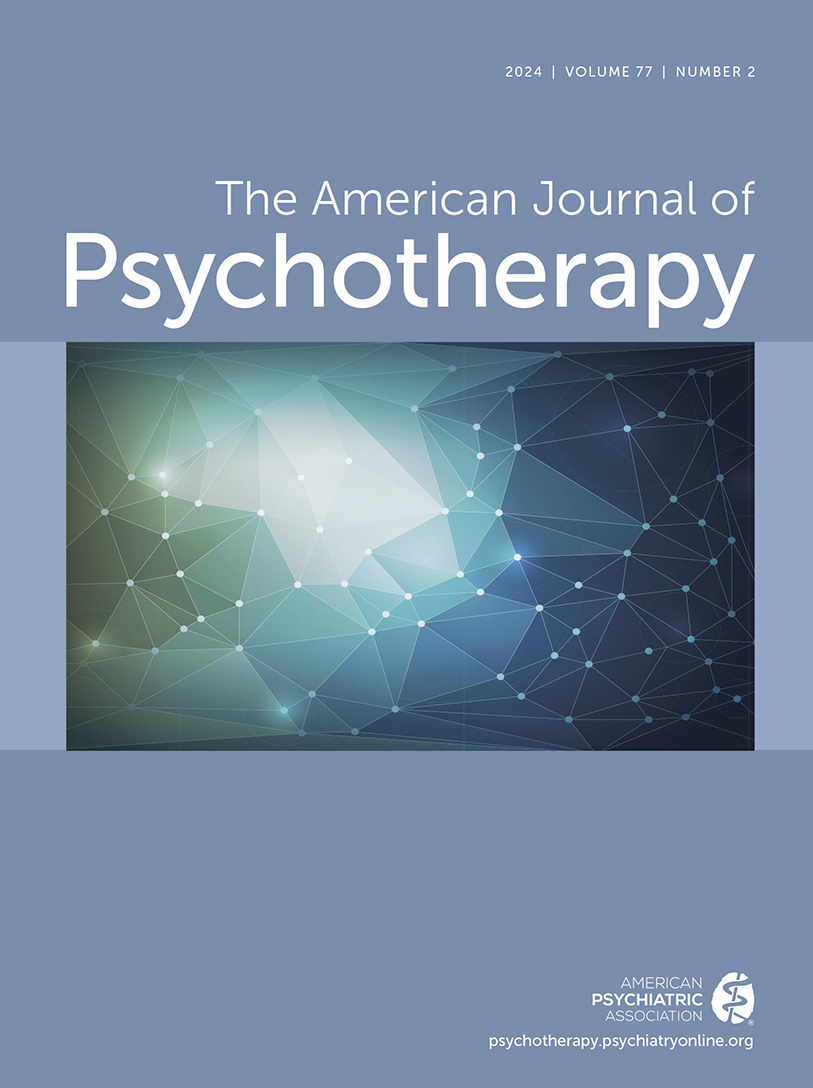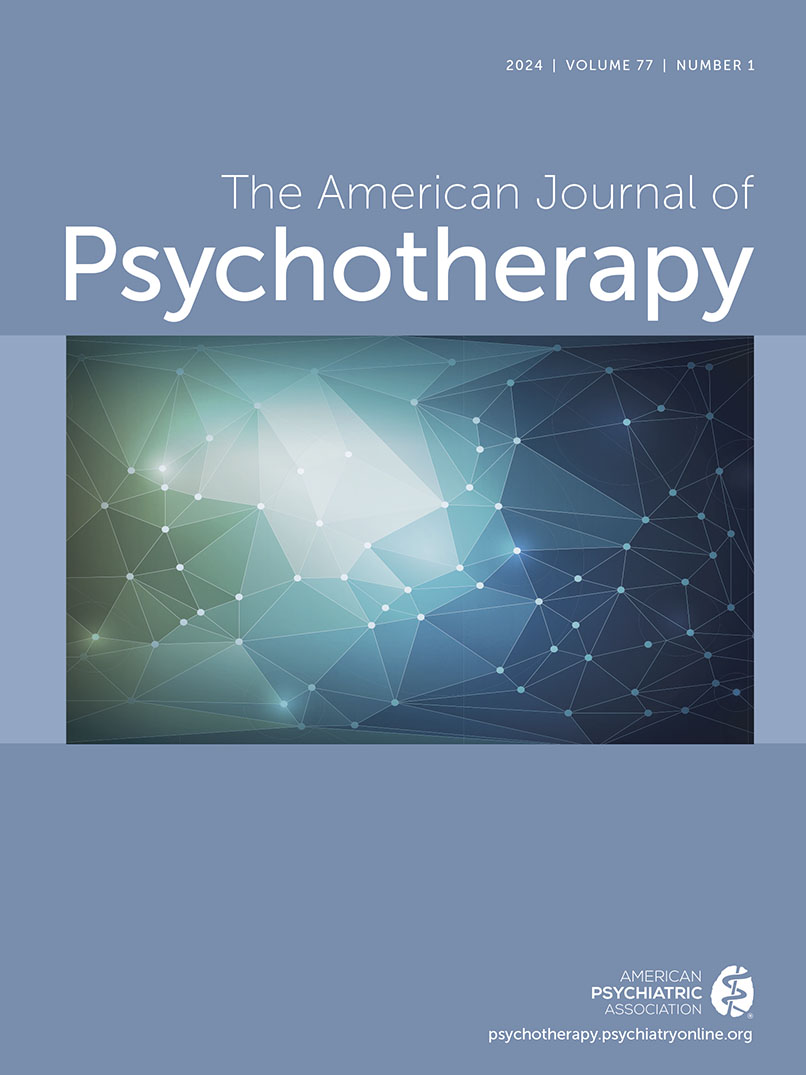American Journal of Psychotherapy
- Volume 39
- Number 4
- October 1985
Editorial
Publication date: 01 October 1985
Pages451–453https://doi.org/10.1176/appi.psychotherapy.1985.39.4.451Articles
Publication date: 01 October 1985
Pages454–466The intensive psychotherapy of six recovered anorexic females revealed consistent information regarding premorbid parental and familial interaction as well as particular difficulties surrounding the onset of the anorexic illness. Persistent personality ...
https://doi.org/10.1176/appi.psychotherapy.1985.39.4.454Publication date: 01 October 1985
Pages467–478Psychotherapists need to attend to their patients’ nonverbal expressive behavior. This paper argues that this is best accomplished within the framework of a strict cognitive approach.
https://doi.org/10.1176/appi.psychotherapy.1985.39.4.467Publication date: 01 October 1985
Pages479–489A brief review of the psychological literature concerning the creative process is presented with a focus on Arieti’s formulation regarding creativity and on Kubie’s hypothesis about the importance of the preconscious. Childrens’ use of fantasy and ...
https://doi.org/10.1176/appi.psychotherapy.1985.39.4.479Publication date: 01 October 1985
Pages490–498Creating a “therapeutic situation” is a necessary condition for any type of psychotherapy. Antisocial adolescents often come from disturbed and chaotic backgrounds and present as behaviorally disturbed and deprived. One of the necessary ingredients in ...
https://doi.org/10.1176/appi.psychotherapy.1985.39.4.490Publication date: 01 October 1985
Pages499–514The psychotherapy of a murderer adjudged not guilty by reason of insanity is presented through dated excerpts from twenty-six months of process material. The patient was treated in a maximum security facility. The murder is interpreted psychodynamically ...
https://doi.org/10.1176/appi.psychotherapy.1985.39.4.499Publication date: 01 October 1985
Pages515–524Animal and human research have demonstrated that events during early development influence vulnerability to physical and mental illness. In addition, the effectiveness of the coping methods used to deal with the problems of living can affect ...
https://doi.org/10.1176/appi.psychotherapy.1985.39.4.515Publication date: 01 October 1985
Pages525–540In this paper I review recent developments in analytic object-relations theory and show how such a frame of reference can formulate and contribute useful clinical insights for the implementation of in-vivo exposure treatment. Since agoraphobic patients ...
https://doi.org/10.1176/appi.psychotherapy.1985.39.4.525Publication date: 01 October 1985
Pages541–552The authors discuss the role of the subjective determinants in the premorbid personality and in the symptom-formation of patients who develop posttraumatic stress disorders. Such factors are assessed through a carejul evaluation of the defense mechanisms. ...
https://doi.org/10.1176/appi.psychotherapy.1985.39.4.541Publication date: 01 October 1985
Pages553–563Water, in the acute psychotic state on the behavioral level, represents a means of controlling anxiety and/or a sign for the situation. On the verbal level there is a lack of integration between its value as sign and as symbol. It is not invested with any ...
https://doi.org/10.1176/appi.psychotherapy.1985.39.4.553Publication date: 01 October 1985
Pages564–579A nonclinical second-generation Holocaust survivor group of young adults is contrasted with a comparable North American Jewish control group. A discriminate analysis of questionnaire responses indicates specific differences between the functioning second ...
https://doi.org/10.1176/appi.psychotherapy.1985.39.4.564Publication date: 01 October 1985
Pages602–603https://doi.org/10.1176/appi.psychotherapy.1985.39.4.602Case Report
Publication date: 01 October 1985
Pages580–586Delayed posttraumatic stress reactions are often triggered by events that echo the original trauma. It is not uncommon, however, for these delayed reactions to represent a metaphor for other current or past life events. A case is presented that ...
https://doi.org/10.1176/appi.psychotherapy.1985.39.4.580Publication date: 01 October 1985
Pages587–592Paranoia can only be understood within the context of the culture to which the individual belongs. A case history of a paranoid disorder in an Indian physician is presented, and the diagnostic and treatment dilemmas are discussed.
https://doi.org/10.1176/appi.psychotherapy.1985.39.4.587Book Review
Publication date: 01 October 1985
Pages593–594https://doi.org/10.1176/appi.psychotherapy.1985.39.4.593aPublication date: 01 October 1985
Pages594–595https://doi.org/10.1176/appi.psychotherapy.1985.39.4.594Publication date: 01 October 1985
Pages595–596https://doi.org/10.1176/appi.psychotherapy.1985.39.4.595Publication date: 01 October 1985
Pages596–597https://doi.org/10.1176/appi.psychotherapy.1985.39.4.596Publication date: 01 October 1985
Pages597–598https://doi.org/10.1176/appi.psychotherapy.1985.39.4.597aPublication date: 01 October 1985
Pages598–599https://doi.org/10.1176/appi.psychotherapy.1985.39.4.598Publication date: 01 October 1985
Pages599–600https://doi.org/10.1176/appi.psychotherapy.1985.39.4.599Publication date: 01 October 1985
Pages600–601https://doi.org/10.1176/appi.psychotherapy.1985.39.4.600Index
Publication date: 01 October 1985
Pages604–609https://doi.org/10.1176/appi.psychotherapy.1985.39.4.604Past Issues
View Issues Archive
Vol. 77 | No. 4

Vol. 77 | No. 3

Vol. 77 | No. 2
